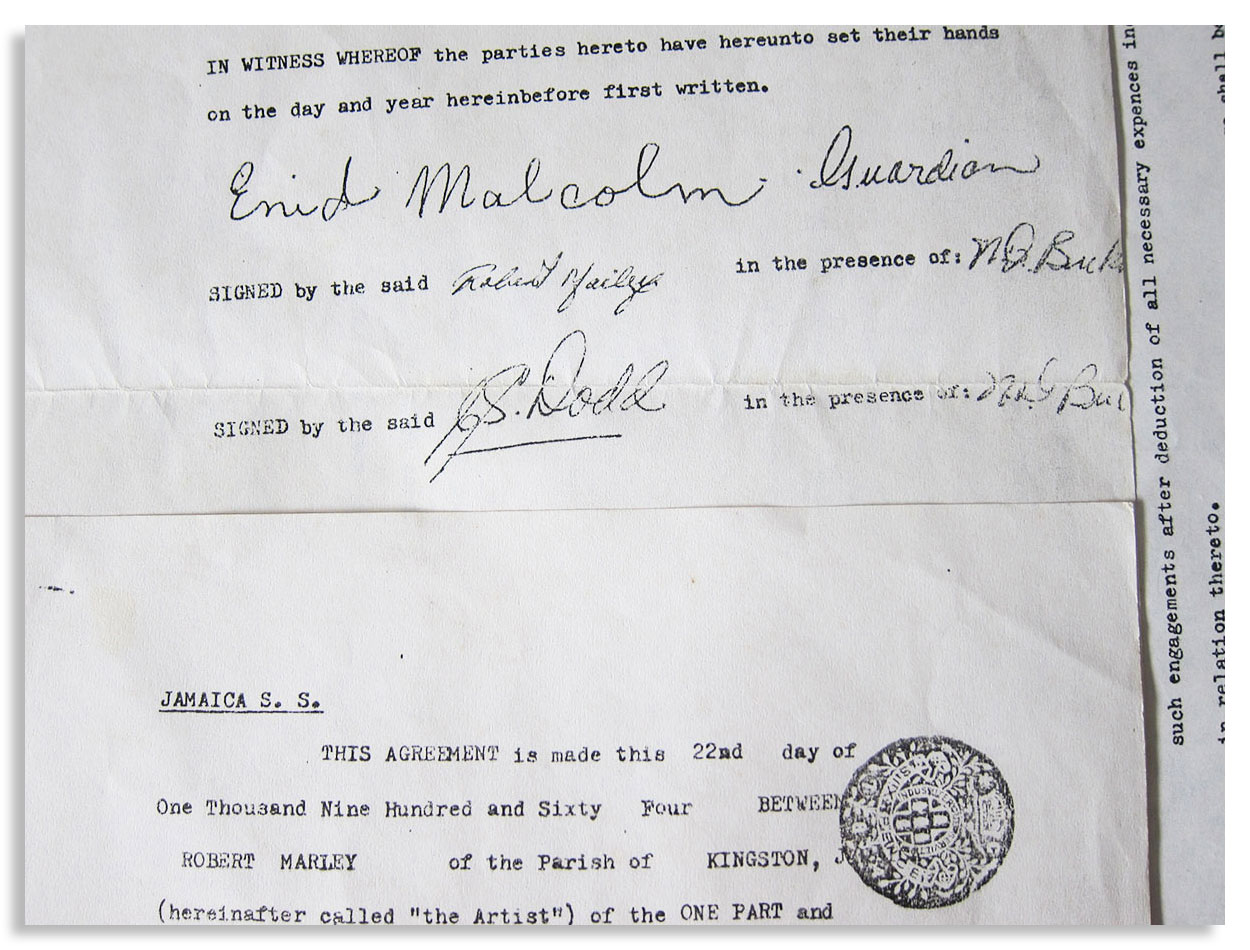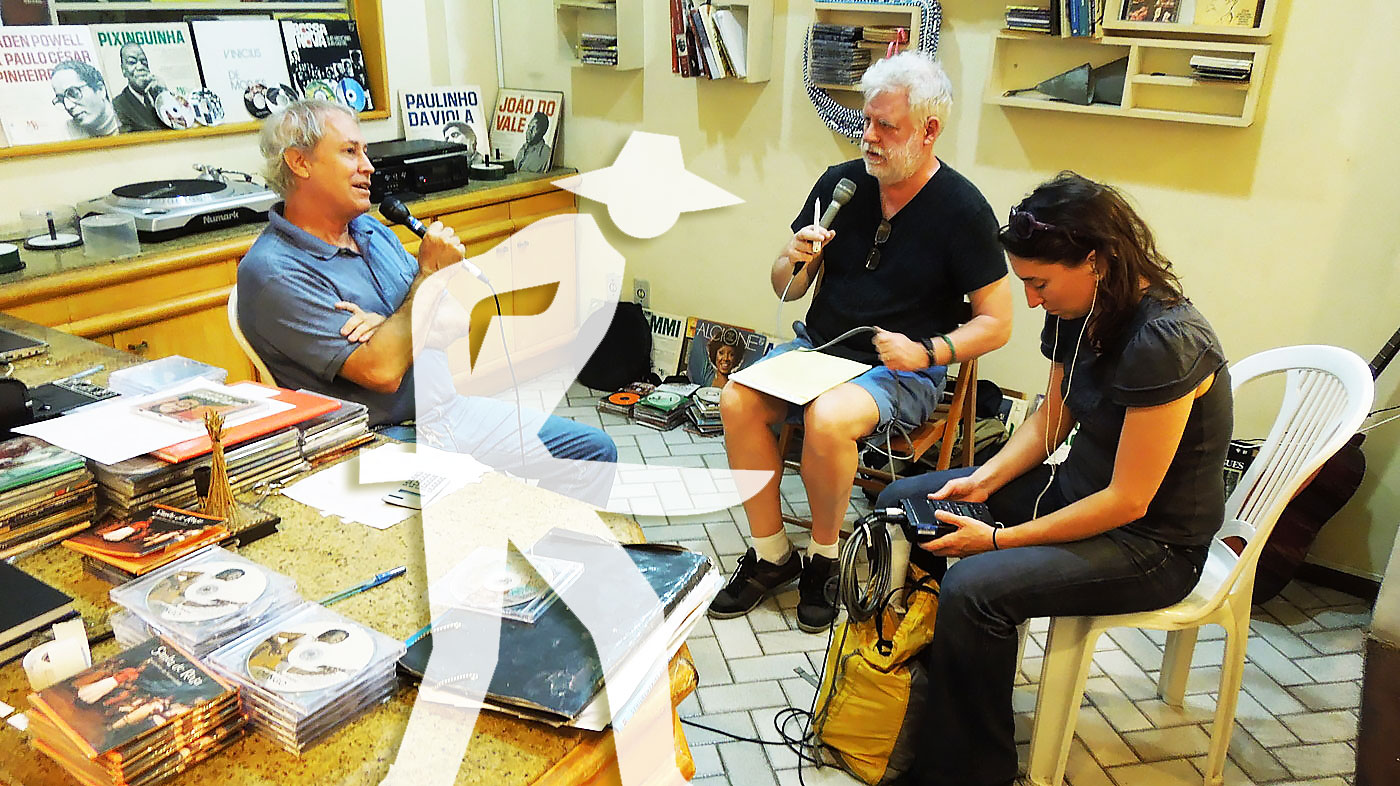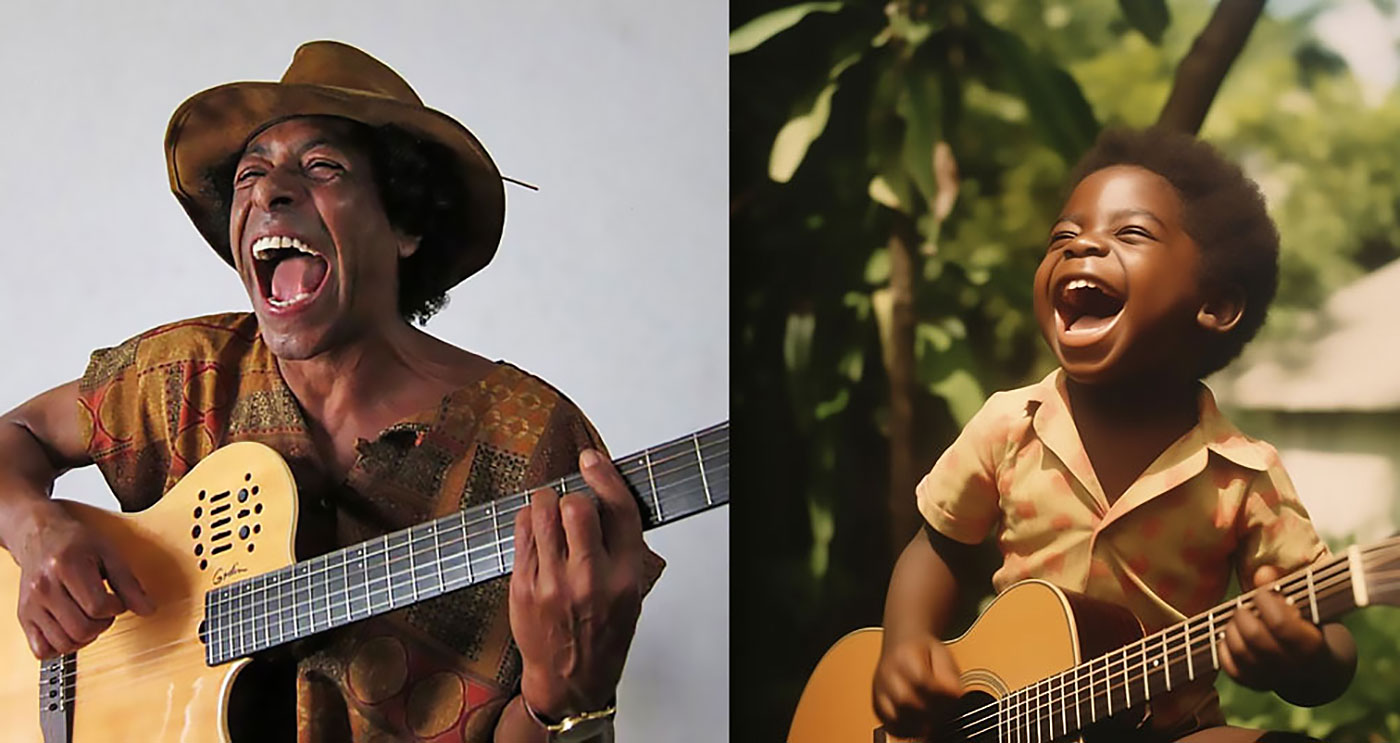CURATION
- from this page: by Matrix
Network Node
- Name: Luizinho Calixto
- City/Place: Campina Grande, Paraíba
- Country: Brazil
Life & Work
-
Bio:
Natural de Campina Grande - PB, Luizinho Calixto nasceu em 1956 em uma família de sanfoneiros de oito baixos. Aos dez anos, decidiu seguir os passos de seu pai, "Seu Dideus", e de seus irmãos, Zé Calixto, Bastinho Calixto e João Calixto. Na sanfona de oito baixos, quando uma nota é pressionada e abre-se o fole, ocorre a emissão de um determinado tom. Mantendo-se a mesma nota pressionada e fechando-se o fole, outro tom é emitido. Na Europa, existem nove modelos de afinação desse instrumento, conhecido por lá como "Diatônico", com um sistema de afinação muito diferente do que se toca no Nordeste do Brasil (conhecido por modelo de "afinação transportada"). A família de Luizinho é referência na execução do fole de oito baixos na afinação transportada.
Luizinho Calixto também é reconhecido por ser o primeiro artista brasileiro a cantar e se acompanhar com a sanfona de oito baixos no modelo de afinação mais comum no Nordeste brasileiro, fazendo uso dos recursos de harmonia aprendidos com Zé Calixto (irmão mais velho), que foi pioneiro em adaptá-lo para acompanhamento, rompendo com o paradigma de que seu instrumento somente serviria para o solo de músicas instrumentais.
Ele criou o primeiro método escrito para a sanfona de oito baixos no modelo de afinação nordestina, uma vez que o ensino do instrumento era tradicionalmente feito oralmente. Com o método, ministrou cursos de fole de oito baixos em Recife, Exu, Caruaru, Fortaleza e, a partir de 2014, foi convidado para ser professor em um Projeto de Extensão da Universidade Estadual da Paraíba, passando a ministrar aulas em Campina Grande. O curso é mantido pela Universidade até hoje e tem sido um marco para o surgimento de pessoas interessadas em perpetuar a tradição do instrumento. Ele também tem ministrado palestras em encontros de sanfoneiros promovidos pela Universidade no interior da Paraíba, onde fala da história da sanfona de oito baixos, relatando também as experiências de outros grandes nomes da nossa música que começaram suas trajetórias com a sanfona de 8 baixos.
Luizinho gravou seu primeiro disco, "Vamos dançar forró", em 1976, aos 19 anos, quando residia no Rio de Janeiro, onde também teve a oportunidade de tocar com Sivuca, Jackson do Pandeiro e Luiz Gonzaga. Ao todo, são dezoito discos gravados entre vinis e CDs, onde toca ritmos tradicionais, xotes, forrós, frevos, sambas, choros, baiões, e alguns ritmos que nunca haviam sido tocados por um sanfoneiro de oito baixos: tango, bolero, valsa, bossa nova, destacando-se um dos traços mais marcantes do seu trabalho que é a virtuose dos improvisos. Tem sucessos gravados por Beto Barbosa, Dominguinhos, Zé Calixto, Bastinho Calixto, entre outros. Já acompanhou grandes nomes da música popular brasileira como Chico Cesar, Dominguinhos, Osvaldinho do Acordeom, Elba Ramalho, Zé Calixto, Fagner, entre outros. Em 1982, a convite de Messias Holanda, mudou-se para Fortaleza, cidade onde passou a maior parte de sua carreira, inicialmente se apresentando no Forró Levanta Poeira em seguida trilhando caminhos novos para a sanfona de oito baixos, chegando a se apresentar com a Orquestra Filarmônica do Ceará no Teatro José de Alencar e participar do filme de Florinda Bolkan "Eu não conhecia Tururú".
Luizinho também possui uma sólida carreira internacional, se apresentando em Cabo Verde, na África, na Argentina, em Portugal, Espanha, França, Itália e, em novembro de 2017, passou um mês em turnê pela Europa, tocando na Suíça e na Alemanha. Também tem participações em encontros de sanfoneiros como jurado e ministrando palestras e workshops a respeito da tradição cultural de seu instrumento. Dentre alguns dos encontros destaca-se o Encontro Internacional de Sanfoneiros promovido pelo presidente da associação de sanfoneiros do Brasil, na cidade de JAHU-SP, Sr. Lauro Valério. Na oportunidade, Luizinho se apresentou com o acordeonista italiano Mirco Pattarini, um dos maiores acordeonistas da Europa e sócio da marca Scandalli.
Luizinho Calixto possui diferentes formatos de shows, desde os mais vinculados ao forró tradicional, onde canta músicas de Luiz Gonzaga, Jackson do Pandeiro, Trio Nordestino, Dominguinhos, também músicas de sua autoria e outras mais recentes interpretadas por Flávio José, Santana, e tem os formatos de shows com músicas instrumentais onde apresenta os mais variados estilos musicais, forrós instrumentais, frevos, chorinhos, bossa-nova, choro-jazz. Ele é compositor, diretor musical, multi-instrumentista, percussionista, também domina a sanfona de cento e vinte baixos, toca violão, cavaquinho e, nas horas vagas, é desenhista e artista plástico.
English:
Luizinho Calixto, born in 1956 in Campina Grande - PB, into a family of eight-bass accordionists, decided at the age of ten to follow in the footsteps of his father, "Seu Dideus," and his brothers, Zé Calixto, Bastinho Calixto, and João Calixto. In the eight-bass accordion, when a key is pressed and the bellows are opened, a certain pitch is emitted. Keeping the same key pressed and closing the bellows emits another pitch. In European countries, there are nine tuning models for this instrument, known there as "Diatonic," with a tuning system very different from that played in Northeast Brazil (known as the "transposed tuning" model). Luizinho's family is a reference in the execution of the eight-bass accordion in the transposed tuning.
Luizinho Calixto is also recognized for being the first Brazilian artist to sing and accompany himself with the eight-bass accordion in the most common tuning model in Northeast Brazil, using harmony resources learned from Zé Calixto (older brother), who pioneered adapting it for accompaniment, breaking the paradigm that his instrument would only serve for instrumental music solos.
He created the first written method for the eight-bass accordion in the Northeastern tuning model, as the instrument was traditionally taught orally. With the method, he taught eight-bass accordion courses in Recife, Exu, Caruaru, Fortaleza, and, from 2014 onwards, he was invited to be a teacher in an Extension Project at the State University of Paraíba, teaching in Campina Grande. The course is maintained by the University to this day and has been a milestone in the emergence of people interested in perpetuating the instrument's tradition. He has also given lectures at accordionist meetings promoted by the University in the interior of Paraíba, where he speaks about the history of the eight-bass accordion, also recounting the experiences of other great names in our music who began their careers with the eight-bass accordion.
Luizinho recorded his first album, "Let's Dance Forró," in 1976, at the age of 19, when he lived in Rio de Janeiro, where he also had the opportunity to play with Sivuca, Jackson do Pandeiro, and Luiz Gonzaga. In total, he has recorded eighteen albums between vinyl and CDs, where he plays traditional rhythms, xotes, forrós, frevos, sambas, choros, baiões, and some rhythms that had never been played by an eight-bass accordionist: tango, bolero, waltz, bossa nova, highlighting one of the most striking features of his work, which is the virtuosity of improvisation. He has had successes recorded by Beto Barbosa, Dominguinhos, Zé Calixto, Bastinho Calixto, among others. He has accompanied great names of Brazilian popular music such as Chico Cesar, Dominguinhos, Osvaldinho do Acordeom, Elba Ramalho, Zé Calixto, Fagner, among others. In 1982, at the invitation of Messias Holanda, he moved to Fortaleza, where he spent most of his career, initially performing at Forró Levanta Poeira and then paving new paths for the eight-bass accordion, even performing with the Philharmonic Orchestra of Ceará at the José de Alencar Theater and participating in Florinda Bolkan's film "I Didn't Know Tururú."
Luizinho also has a solid international career, performing in Cape Verde, Africa, Argentina, Portugal, Spain, France, Italy, and, in November 2017, he spent a month on tour in Europe, playing in Switzerland and Germany. He also participates in accordionist meetings as a judge and giving lectures and workshops on the cultural tradition of his instrument. Among some of the meetings, the International Meeting of Accordionists stands out, promoted by the president of the Brazilian accordionists' association, in the city of JAHU-SP, Mr. Lauro Valério. On that occasion, Luizinho performed with the Italian accordionist Mirco Pattarini, one of the greatest accordionists in Europe and a partner of the Scandalli brand.
Luizinho Calixto has different formats of shows, from those more linked to traditional forró, where he sings songs by Luiz Gonzaga, Jackson do Pandeiro, Trio Nordestino, Dominguinhos, as well as songs of his own and others more recent interpreted by Flávio José, Santana, to instrumental music shows where he presents the most varied musical styles, instrumental forrós, frevos, chorinhos, bossa-nova, choro-jazz. He is a composer, musical director, multi-instrumentalist, percussionist, also mastering the one-hundred-twenty-bass accordion, playing guitar, cavaquinho, and, in his spare time, is a draftsman and visual artist.
Media | Markets
- ▶ Instagram: luizinhocalixto
- ▶ YouTube Channel: http://www.youtube.com/@luizinhocalixto8baixos
- ▶ Spotify: http://open.spotify.com/artist/5RVxzbhV0agb2TSjCD3Kmk
- ▶ Apple Music: http://music.apple.com/br/artist/luizinho-calixto/423207478
- ▶ Deezer: http://www.deezer.com/br/artist/6466237
- ▶ Tidal: http://tidal.com/browse/artist/5952197
Clips (more may be added)
The Matrix is a small world network. Like stars coalescing into a galaxy, creators in the Matrix mathematically gravitate to proximity to all other creators in the Matrix, no matter how far apart in location, fame or society. This gravity is called "the small world phenomenon". Human society is a small world network, wherein over 8 billion human beings average 6 or fewer steps apart. Our brains contain small world networks...
![]() Wolfram MathWorld on the Small World Phenomenon
Wolfram MathWorld on the Small World Phenomenon
![]() Matemática Wolfram sobre o Fenômeno Mundo Pequeno
Matemática Wolfram sobre o Fenômeno Mundo Pequeno
"In a small world, great things are possible."

It's not which pill you take, it's which pathways you take. Pathways originating in the sprawling cultural matrix of Brazil: Indigenous, African, Sephardic and then Ashkenazic, European, Asian... Matrix Ground Zero is the Recôncavo, contouring the Bay of All Saints, earthly center of gravity for the disembarkation of enslaved human beings — and the sublimity they created — presided over by the ineffable Black Rome of Brazil: Salvador da Bahia.
("Black Rome" is an appellation per Caetano Veloso, son of the Recôncavo, via Mãe Aninha of Ilê Axé Opô Afonjá.)
"Dear Sparrow: I am thrilled to receive your email! Thank you for including me in this wonderful matrix."
—Susan Rogers: Personal recording engineer for Prince, inc. "Purple Rain", "Sign o' the Times", "Around the World in a Day"... Director of the Berklee Music Perception and Cognition Laboratory
"Thanks! It looks great!....I didn't write 'Cantaloupe Island' though...Herbie Hancock did! Great Page though, well done! best, Randy"
"We appreciate you including Kamasi in the matrix, Sparrow."
—Banch Abegaze: manager, Kamasi Washington
"This is super impressive work ! Congratulations ! Thanks for including me :)))"
—Clarice Assad: Pianist and composer with works performed by Yo Yo Ma and orchestras around the world
"Dear Sparrow, Many thanks for this – I am touched!"
—Julian Lloyd-Webber: UK's premier cellist; brother of Andrew Lloyd Webber (Evita, Jesus Christ Superstar, Cats, Phantom of the Opera...)
"Thanks, this is a brilliant idea!!"
—Alicia Svigals: World's premier klezmer violinist
Developed here in the Historic Center of Salvador da Bahia ↓ .
![]() Bule Bule (Assis Valente)
Bule Bule (Assis Valente)
"♫ The time has come for these bronzed people to show their value..."
Production: Betão Aguiar
MATRIX MODUS OPERANDI
Recommend somebody and you will appear on that person's page. Somebody recommends you and they will appear on your page.
Both pulled by the inexorable mathematical gravity of the small world phenomenon to within range of everybody inside.
And by logical extension, to within range of all humanity outside as well.
MATRIX (PARDAL)
I'm Pardal here in Brazil (that's "Sparrow" in English). The deep roots of this project are in Manhattan, where Allen Klein (managed the Beatles and The Rolling Stones) called me about royalties for the estate of Sam Cooke... where Jerry Ragovoy (co-wrote Time is On My Side, sung by the Stones; Piece of My Heart, Janis Joplin of course; and Pata Pata, sung by the great Miriam Makeba) called me looking for unpaid royalties... where I did contract and licensing for Carlinhos Brown's participation on Bahia Black with Wayne Shorter and Herbie Hancock...
...where I rescued unpaid royalties for Aretha Franklin (from Atlantic Records), Barbra Streisand (from CBS Records), Led Zeppelin, Mongo Santamaria, Gilberto Gil, Astrud Gilberto, Airto Moreira, Jim Hall, Wah Wah Watson (Melvin Ragin), Ray Barretto, Philip Glass, Clement "Sir Coxsone" Dodd for his interest in Bob Marley compositions, Cat Stevens/Yusuf Islam and others...
...where I worked with Earl "Speedo" Carroll of the Cadillacs (who went from doo-wopping as a kid on Harlem streetcorners to top of the charts to working as a janitor at P.S. 87 in Manhattan without ever losing what it was that made him special in the first place), and with Jake and Zeke Carey of The Flamingos (I Only Have Eyes for You)... stuff like that.

Yeah this is Bob's first record contract, made with Clement "Sir Coxsone" Dodd of Studio One and co-signed by his aunt because he was under 21. I took it to Black Rock to argue with CBS' lawyers about the royalties they didn't want to pay (they paid).
MATRIX MUSICAL
I built the Matrix below (I'm below left, with David Dye & Kim Junod for U.S. National Public Radio) among some of the world's most powerfully moving music, some of it made by people barely known beyond village borders. Or in the case of Sodré, his anthem A MASSA — a paean to Brazil's poor ("our pain is the pain of a timid boy, a calf stepped on...") — having blasted from every radio between the Amazon and Brazil's industrial south, before he was silenced. The Matrix started with Sodré, with João do Boi, with Roberto Mendes, with Bule Bule, with Roque Ferreira... music rooted in the sugarcane plantations of Bahia. Hence our logo (a cane cutter).
A Massa (do povo carente) / The Masses (of people in need)

-
Add to my PlaylistA Massa - Raymundo Sodré (7,093 plays)
-
Add to my PlaylistSina de Cantador - Raymundo So... (6,909 plays)
-
Add to my PlaylistMagnetismo - Raymundo Sodré ... (6,353 plays)
-
Add to my PlaylistSacando a Cana - Raymundo Sodr... (5,957 plays)
-
Add to my PlaylistMêrêrê - Raymundo Sodré (5,465 plays)
-
Add to my PlaylistJardim do Amor - Raymundo Sodr... (4,677 plays)
-
Add to my PlaylistDebaixo do Céu - Raymundo Sodr... (4,151 plays)
-
Add to my PlaylistDesejo de Amar - Raymundo Sodr... (3,861 plays)
-
Add to my PlaylistOração pra Yá Oxum - Raymundo ... (3,741 plays)
-
Add to my PlaylistYá África - Raymundo Sodré (3,509 plays)
-
Add to my PlaylistMeu Rio, Cadê o Papel - Raymun... (3,177 plays)
-
Add to my PlaylistCasa de Trois - Raymundo Sodré... (2,896 plays)
-
Add to my PlaylistMulher é Laço que Prende o Coração do Vaqueiro - R... (2,556 plays)











































































































































































































































































































































































































































































